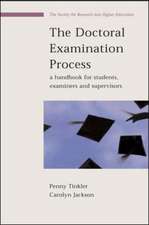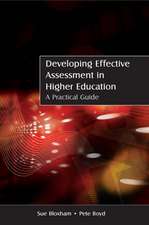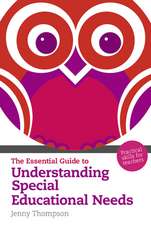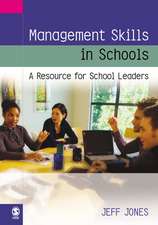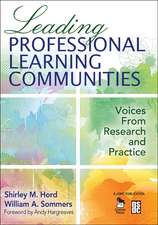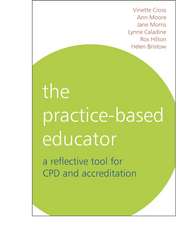Science Teacher Preparation in Content-Based Second Language Acquisition: ASTE Series in Science Education
Editat de Alandeom W. Oliveira, Molly H. Weinburghen Limba Engleză Hardback – noi 2016
| Toate formatele și edițiile | Preț | Express |
|---|---|---|
| Paperback (1) | 731.59 lei 6-8 săpt. | |
| Springer International Publishing – 7 iul 2018 | 731.59 lei 6-8 săpt. | |
| Hardback (1) | 737.74 lei 6-8 săpt. | |
| Springer International Publishing – noi 2016 | 737.74 lei 6-8 săpt. |
Preț: 737.74 lei
Preț vechi: 899.68 lei
-18% Nou
Puncte Express: 1107
Preț estimativ în valută:
141.19€ • 145.85$ • 117.50£
141.19€ • 145.85$ • 117.50£
Carte tipărită la comandă
Livrare economică 25 martie-08 aprilie
Preluare comenzi: 021 569.72.76
Specificații
ISBN-13: 9783319435145
ISBN-10: 3319435140
Pagini: 428
Ilustrații: XI, 387 p. 76 illus., 5 illus. in color.
Dimensiuni: 155 x 235 x 29 mm
Greutate: 0.74 kg
Ediția:1st ed. 2017
Editura: Springer International Publishing
Colecția Springer
Seria ASTE Series in Science Education
Locul publicării:Cham, Switzerland
ISBN-10: 3319435140
Pagini: 428
Ilustrații: XI, 387 p. 76 illus., 5 illus. in color.
Dimensiuni: 155 x 235 x 29 mm
Greutate: 0.74 kg
Ediția:1st ed. 2017
Editura: Springer International Publishing
Colecția Springer
Seria ASTE Series in Science Education
Locul publicării:Cham, Switzerland
Cuprins
Introduction: Science Teacher Preparation in Language and Content, Alandeom W. Oliveira, and Molly H. Weinburgh.- Part 1: Pre-service Teacher Preparation.- Cultivating Teacher Knowledge of the Role of Language in Science: A Model of Elementary Grade Pre-Service Teacher Preparation, Marco A. Bravo.- A Language-Based Approach to Content Instruction (LACI) in Science For English Language Learners, Luciana C. de Oliveira.- The Professional Development of Pre-service Teachers in an Integrated Science and Language Acquisition Curriculum with Third-Grade Students, Anita C. Hernández.- Developing an Adaptive Disposition for Supporting English Language Learners in Science: A Capstone Science Methods Course, Sarah A. Roberts, Julie A. Bianchini, Jin Sook Lee, Sarah Hough, and Stacey L. Carpenter.- Preparing Pre-service Secondary Teachers to Teach Science to English Learners: Theory into Practice, Trish Stoddart, Jorge Solis, Edward G. Lyon, and Sara Tolbert.- Online Professional Learning for Science Teachers of Multilingual Learners, Kara Mitchell Viesca, Elizabeth Mahon, Christopher D. Carson, and the eCALLMS Team.- Preparing Science Teachers for English Learners: A Targeted and Integrated approach to Pre-service Teacher Education, Lara K. Smetana and Amy J. Heineke.- Part 2: In-service Teacher Preparation.- The Integration of English Language Development and Inquiry Science into a Blended Professional Development Design, Susan Gomez Zwiep, and William J. Straits.- Doing and Talking Science: Engaging ELs in the Discourse of the Science and Engineering Practices, Rita MacDonald, Emily Miller, and Sarah Lord.- Academic Language and Literacy in Every Setting (ALLIES+): Strengthening the STEM Learning Ecosystem, Susan O’Hara, Robert Pritchard, Deborah Pitta, Renee Newton, Uyen Do, and Lisa Sullivan.- A Design-based Model of Teacher Professional Learning in the LISELL-B Project, Cory A. Buxton, Martha Allexsaht-Snider, Yainitza Hernandez Rodriguez, Rouhollah Aghasaleh, Lourdes Cardozo-Gaibissa, and Mehtap Kirmaci.- Science Teachers as Architects: Building and Supporting Science-Learning Environments with Emergent Bilingual Students, Max Vázquez Domínguez, Martha Allexsaht-Snider, and Amanda Latimer.- An Alternative Approach to Educating Secondary Science and Mathematics Teachers: Meeting the Needs of Culturally and Linguistically Diverse Youth, Cecilia M. Hernandez, Jamie S. Baker, Christine M. Reyes, and Lida J. Uribe-Flórez.- A Functional Approach to 21st Century Science Literacy, Wei Zhang.- Part 3: International Perspectives.- Promoting the Integration of Inquiry Based Science and English Learning in Primary Education through Triadic Partnerships, Mariona Espinet, Laura Valdés-Sánchez, Núria Carrillo, Laura Farró, Roser Martínez, Núria López, and Ana Castillón.- Processing Science through Content and Language Integrated Learning (CLIL): A Teacher’s Practicum, Margaret Rasulo, Anna De Meo, and Maria De Santo.- Science Workshop: Let their Questions Lead the Way, Sara E. D. Wilmes.- Deaf Students Using Sign Language in Mainstream Science Classrooms, Audrey Cameron, Rachel O’Neill, and Gary Quinn.- Part 4: Science Teacher Preparation.- Epilogue: Emergent Trends and Threads, Alandeom W. Oliveira, and Molly H. Weinburgh.- Author Biographies.
Textul de pe ultima copertă
The primary purpose of this book is to provide science teacher educators with exemplars of professional development programs designed to prepare school teachers to effectively help language learners in science classrooms simultaneously gain language proficiency and conceptual understanding. To this end, this book examines seventeen science teacher preparation programs that span a wide variety of grade levels (elementary, middle, and secondary), countries (Italy, Luxemburg, Spain, UK, and US), and linguistic contexts (English as a Second Language, English as a Foreign Language, trilingual classrooms, and teaching deaf children science through sign language). The book is divided into three main parts. Each part consists of chapters that illustrate a common, cross-cutting theme in science teacher preparation in content-based second language acquisition, namely pre-service teacher preparation, in-service teacher preparation, and international perspectives. Each part provides many insights on the similarities and differences in the professional development approaches used to prepare science teaching with varied amounts of instructional experience help students in different parts of the world overcome linguistic barriers while simultaneously learning concepts central to science. Bringing together researchers from various academic backgrounds (science education, TESOL, and Applied Linguistics), attention is given to varied facets of the intersection of science and language learning in the specific context of school teacher preparation.
Caracteristici
Fills an important gap in the science education literature by integrating science and language Introduces pedagogical models of content-based instruction Shares professional development strategies and teacher training models that work







